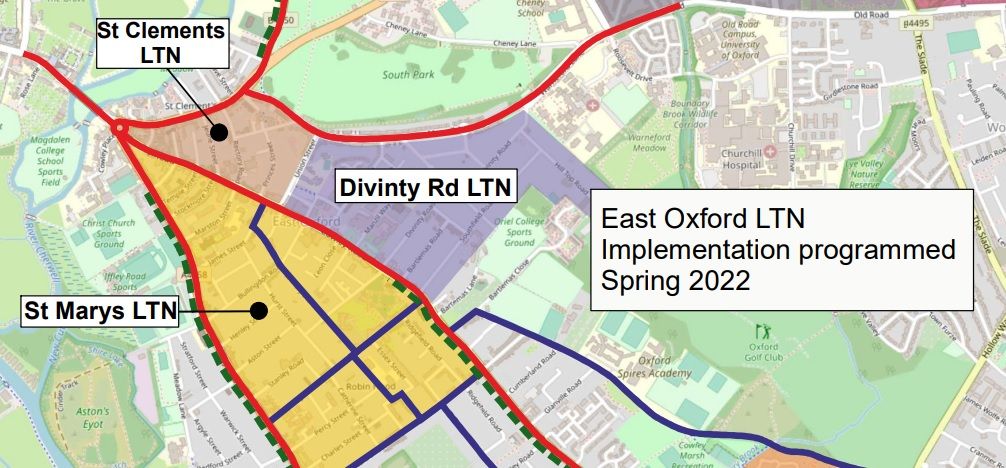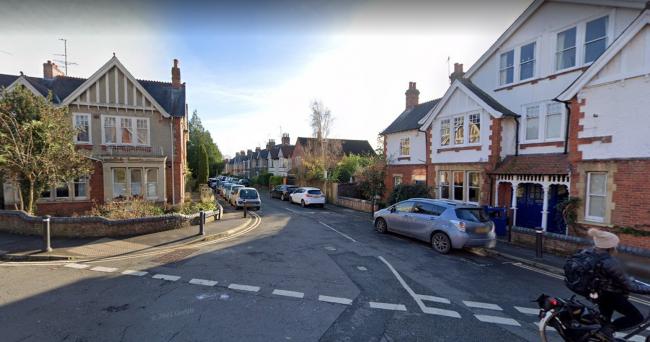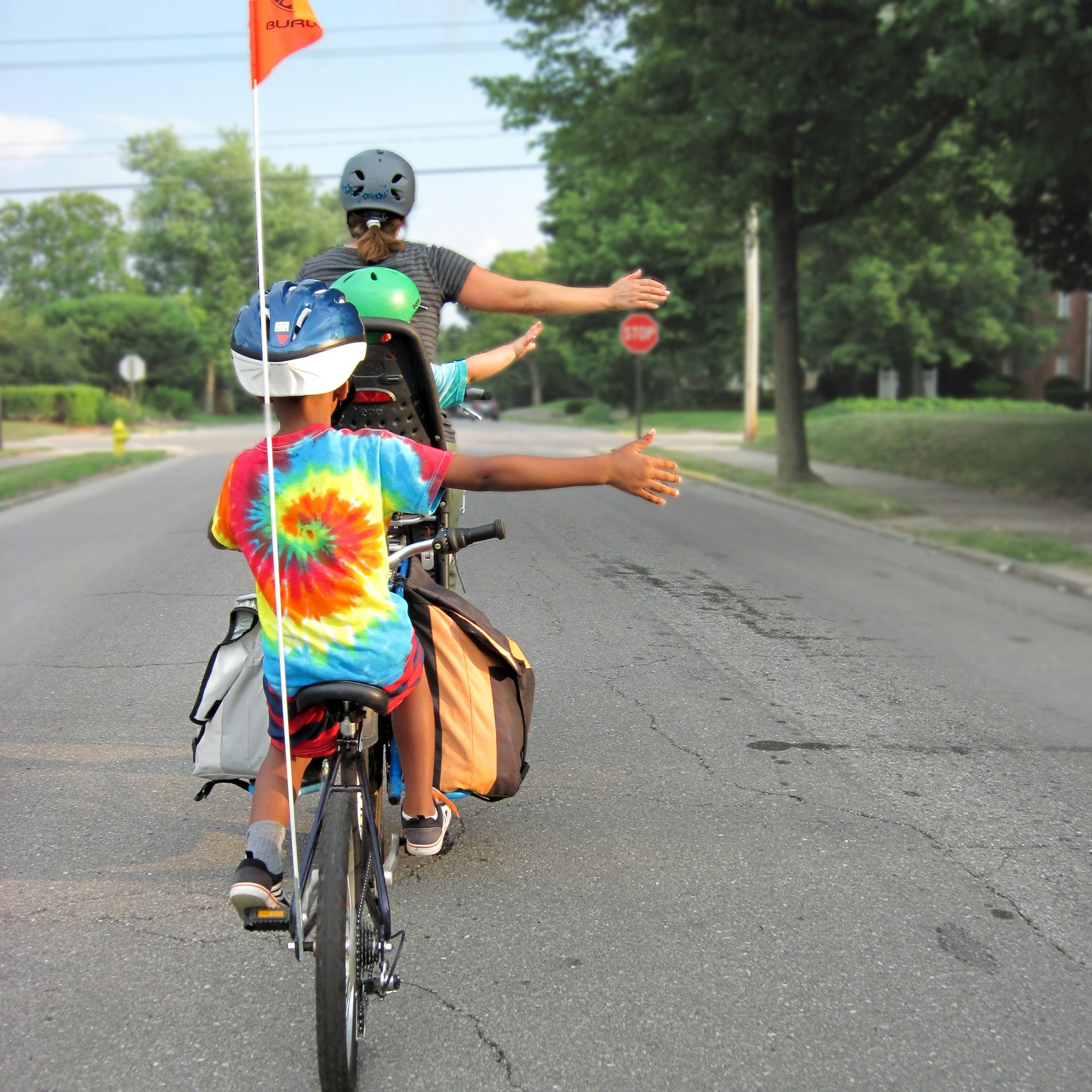LTN trials, Quietways and Quickways coming to East Oxford soon
Oxfordshire County Council has recently written to residents to provide more information on the upcoming East Oxford LTN trials and related active travel improvements.

In early March, the County Council wrote to residents of those areas of Headington closest to East Oxford informing them of the dates for the start of low traffic neighbourhood (LTN) trials in East Oxford.
Implementation of the trials follows consultations in summer 2021 and a decision by the leader of the County Council in December 2021.
The trials will take place under an Experimental Traffic Regulation Order (ETRO).
In its letter, the County Council states:
“LTNs are an area where through-traffic is reduced by installing traffic filters in the form of planters and lockable bollards on certain roads within an area. These filters allow access for cyclists and pedestrians. Where possible, filters will be placed within existing parking restrictions to minimise any loss of parking. You will still be able to drive in your area, however, it may be necessary to seek alternative routes.
The lockable bollards will be accessible to waste and emergency services and can be opened if there are problems in the wider road network.
Quiet cycle routes (Quietways) will be identified by signs and cycle markings.
The programme of works for 2022 is:
- Installation of signage at entry points to LTNs mid-April
- Installation of planters mid-April/early May
- Installation of bollards early May
- Installation of waiting restrictions end of May
- Introductions of Quietways June
All roads will remain open until the final planter has been introduced. Warning signs will be erected two weeks prior to final installation of the filters.
An ETRO consultation will go live once the filters have been installed in May. The ETRO consultation will be open for a minimum of six months, during which you can provide feedback on the scheme. The outcome of the consultation will be reported to the Council’s Cabinet for a formal decision on whether to extend the trial, make the East Oxford LTNs permanent or remove them. Any decision will be made based on a range of factors including feedback received from the ETRO consultation, traffic congestion and air quality monitoring.”
Quickways cycle routes
Designed to link up with the LTNs (along with wider traffic management schemes proposed for further down the line) are Quickways cycle routes, which involve the removal of parking spaces to allow for the reallocation of road space to provide safer conditions for cycling, combined with supporting 20mph speed limits.
The closest of the Quickway cycle routes to Headington are on Warneford Lane, Morrell Avenue, Marston Road and St Clement’s (funding permitting).
Together, the East Oxford LTNs and Warneford Lane Quickway (involving the removal of the parking bays along both sides of Warneford Lane – more detail here) will provide more active travel options for local people, filling some current gaps between Headington, East Oxford, Donnington, Cowley, South Oxford and the city centre.
Importantly, combined with the East Oxford LTNs, the new protected cycle routes on Warneford Lane will dramatically improve safety for children travelling to Cheney School by cycle, enabling many of them to do this for the first time.
It remains to be seen how the Morrell Avenue, Marston Road and St Clement’s measures will affect active travel into Oxford via the Plain, as this depends to a large extent on what measures are put in place to make the Plain roundabout safer for cyclists of all abilities.
However, people wishing to cycle into central Oxford from Headington, many of whom find themselves excluded from using the Plain roundabout due to the current dangerous conditions, will now have the option to take the Quietways routes through the East Oxford LTNs to join the shared Thames path at Donnington Bridge and cycle on to the Westgate Centre (or continue to West Oxford) via an almost completely traffic-free route. Depending on your starting point in Headington and which side of Oxford you need to access, this distance is approximately the same or slightly shorter than the alternative route avoiding the Plain roundabout via the Marston Cycle Path.
Why active travel measures are needed
Measures that enable active travel are important, even for people who don’t envisage themselves walking and cycling more, because the first step in reducing traffic congestion and delays for buses is making it possible for those who can to choose an alternative to using their cars, therefore freeing up congested road space for those who can’t.
You can find more information from the Council, including a map of all the live active travel proposals in the city (including the 3 proposed Headington LTNs) here.
Did you know LTNs are not a new phenomenon? Most of Oxford (and much of Headington) is already designed that way. Do you already live in an LTN?
Related articles


